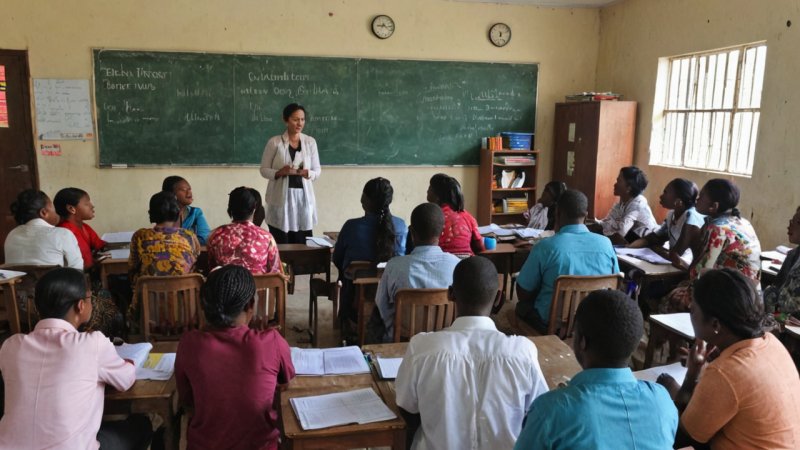Literacy is a fundamental human right and a crucial tool for personal empowerment and community development. In developing countries, where access to education may be limited, setting up literacy programs can significantly impact individuals and communities. Here’s a guide on how to establish effective literacy programs in these regions.
1. **Assess Community Needs**: Before initiating a literacy program, it is essential to understand the specific needs of the community. Conduct surveys or focus groups to identify the literacy levels, language preferences, age groups, and any barriers to learning faced by potential participants. Collaboration with local community leaders can provide valuable insights and foster support for the initiative.
2. **Define Program Goals**: Once you have assessed the community's needs, define clear and achievable goals for your literacy program. Goals could include improving reading and writing skills, providing adult education, or integrating vocational training. Establishing measurable outcomes will help gauge the program's effectiveness and guide future improvements.
3. **Develop a Curriculum**: A well-structured curriculum is vital to the success of any literacy program. It should cater to the specific needs and learning styles of the participants. Incorporate culturally relevant materials and practical life skills that learners can apply in their everyday lives. Consider utilizing local languages alongside global languages to enhance understanding and engagement.
4. **Recruit Qualified Instructors**: The quality of instruction can make or break a literacy program. Recruit local teachers or volunteers who are passionate about education and familiar with the community's cultural context. Providing training for instructors will ensure they have the necessary skills and resources to deliver effective lessons.
5. **Create a Supportive Learning Environment**: Set up a welcoming and safe space for learners to gather. This could be a community center, school, or even an outdoor area. Ensure that the learning environment is conducive to education, with adequate supplies like books, writing materials, and learning aids. Encourage a positive atmosphere where students feel comfortable asking questions and participating.
6. **Engage the Community**: For a literacy program to thrive, community involvement is essential. Organize workshops, events, or awareness campaigns to highlight the importance of literacy. Involve parents, local organizations, and businesses in supporting the program. Their investment can lead to greater participation and resources for the initiative.
7. **Implement Ongoing Assessment**: Regularly evaluate the program’s effectiveness by tracking the progress of participants. Use assessments, feedback surveys, and interviews to identify areas for improvement. Adapt the curriculum and teaching methods based on these evaluations to ensure that the program remains relevant and impactful.
8. **Promote Lifelong Learning**: Encourage participants to view literacy as a lifelong journey. Offer advanced courses, reading clubs, or community projects to sustain their interest and commitment to learning. Highlight the benefits of literacy not just for individuals but for the entire community, as it leads to enhanced opportunities and social empowerment.
In conclusion, establishing literacy programs in developing countries requires careful planning, community engagement, and a commitment to ongoing improvement. By following these steps, you can create a program that not only fosters literacy but also empowers individuals and strengthens communities. Every effort counts in the fight against illiteracy, and your initiative can be a beacon of hope for many.
Establishing Effective Literacy Programs Abroad
Learn how to establish effective literacy programs in developing countries to empower individuals and strengthen communities.






